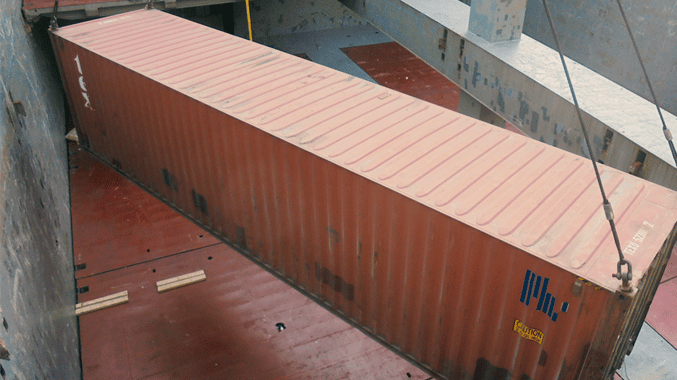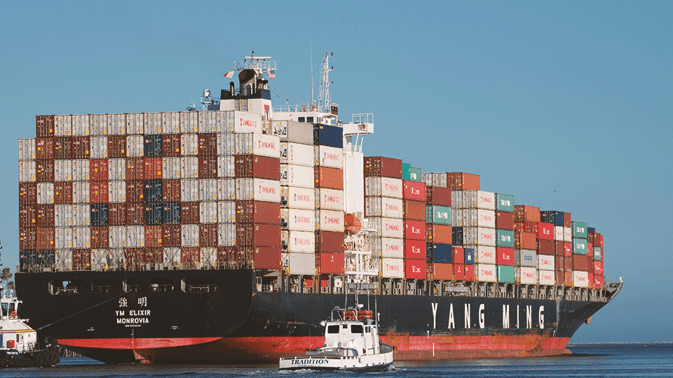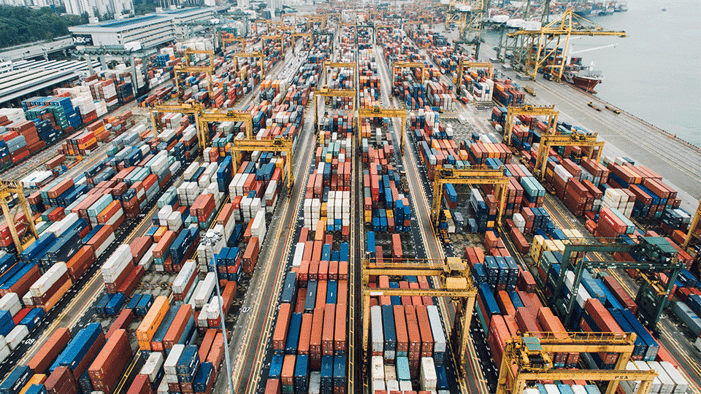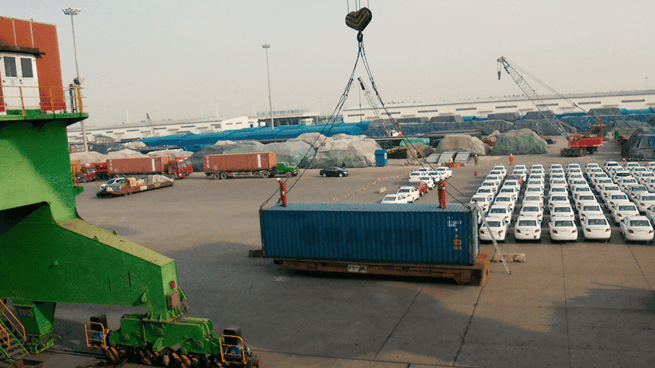The price of shipping containerized cargo across international borders has been trending upward — sometimes in dramatic fashion — for several years now.
These price increases and general instability have left their mark on the balance sheets and peace of mind of shippers around the world.
But you’re not alone in questioning why container rates are continuing to rise and when (or, yikes, if ) they’ll fall once more. And you’re not the only company with concerns about how to save money on these shipments or what alternative options are available to you.
Here at ATS International Services Inc. (a division of Anderson Trucking Service), our time in the international transportation world has left us with a well-rounded understanding of the factors that drive shipping prices — including the price of moving containerized cargo.
Although ATS International specializes primarily in breakbulk and roll-on/roll-off transport (ro-ro), our expertise extends beyond this realm.
As such, we’re confident in our ability to walk you through what’s going on in the containerized transport marketplace — a market we monitor daily.
While there isn’t a one-size-fits-all solution for managing your transportation supply chain during this time, this article will help you find solutions that work for your business.
Understanding this information will empower you to confidently navigate the ebbs and flows of the international marketplace.
- Why are container rates rising?
- How can I save money on containerized freight?
- What are some alternatives to containerized freight?
Why Are Container Rates Rising?
According to data reported by the Drewry World Container Index on June 20, 2024, the average weekly price for a 40’ container was $5,117. That's a 233 percent increase compared to the same week in 2023, and a 260 percent increase over the average 2019 rate of $1,420.
Rates spiked as we entered Q1 of 2024 largely due to conflicts in the Red Sea, but when they began to decline in early spring — albeit to a level still some $1,200 higher than they were in June 2023 — the industry was hopeful things would soon even out.
Those hopes now appear to be dashed, as Q3 of 2024 sees rates climbing once again.
A price increase of this nature is enough to leave both shippers and transportation companies with questions as to how we got here.
Four factors that have affected container pricing worldwide are:
- Global events
- Port productivity
- High demand
- Shipper behavior
These factors have come together to bear down on the containerized transportation marketplace, driving up rates to match the inefficiencies therein.
#1: Global Events Have Rates Climbing
To keep the containerized transportation space moving, container manufacturers must produce, carriers must add ships into service, and key shipping routes must maintain smooth, efficient operations.
Unfortunately, global events like the lingering after-effects of COVID-19 and international conflicts centered on critical shipping lanes have sent rates skyrocketing in recent months.
Supply chain congestion, which was mounting even before the onset of COVID-19, has limited the ability of container manufacturers to produce the annual container volume necessary to keep global supply afloat.
To make matters worse, in the tail end of 2023, attacks on cargo ships in the Red Sea forced virtually all ocean carriers operating in the region to reroute their freight to avoid the Suez Canal.

The distance and time added to shipments are subsequently costing shippers millions. By mid-January 2024 — a mere two months since the attacks began — 40-foot container pricing had risen by 23 percent.
The danger in the Red Sea also reduced container capacity due to extended voyages, further driving up rates.
Despite many carriers adding ships to compensate for longer routes now used to avoid the conflicts in the Red Sea, Drewry reported only a 2 percent increase in effective container capacity per month.
The additional containers are sailing over longer distances due to the route changes (about 34 days to transit around the Cape of Good Hope compared to 25.4 days through the Suez Canal), and are therefore less productive than before the Red Sea attacks began.
Luckily, Drewry also indicated that the remaining capacity due to be delivered this year would finally turn the tides toward increased effective capacity.
And while there is no consensus on when the Red Sea crisis will end, with attacks on shipping vessels recently intensifying, a June 2024 Drewry survey of 90 shippers operating in the region indicated a belief that the diversions may end in Q1 of the new year.
Diplomatic talks concerning Gaza have bolstered this hope, though no concrete relief has yet been offered.
With that in mind, shippers should anticipate continued transit delays, disruptions, capacity challenges and, yes, increased rates throughout the latter half of 2024.
#2: Port Productivity Is Treading Water
As evidenced by the change in container capacity outlined above, disruptions to the global supply chain have wreaked havoc on shippers and carriers alike in recent months.
One symptom of this larger issue is a decline in port productivity. Ports have struggled with congestion since before COVID-19, but recent data shows major ports heading for pandemic-like conditions — despite the actual outbreak being well behind us.
Drewry reported that the time spent by ships waiting before berthing at high-volume ports increased by a whopping 43 percent between Q3 of 2023 and Q2 of 2024.

A perfect storm of circumstances seems to have contributed to these back-ups at major ports: Peak season, the aforementioned lack of capacity, and the effective closure of the Suez Canal to vessel traffic all increased the density of ships in terminals.
CNBC reported in mid-June 2024 that vessels have been waiting an average of seven days to get into port in Singapore, according to DHL. The report also indicated that wait times have risen substantially across all main Chinese port regions, with Shanghai and Qingdao hit the hardest.
Again, the longer a shipment takes to complete, the higher rates will be for shippers. The vast number of containers sitting at international ports removes yet another portion of container supply from the marketplace, increasing prices as a result.
But Drewry offers some hope: The outlet hypothesizes that the end of peak season, the delivery of the remainder of 2024's ship capacity, and the eventual re-opening of the Suez Canal route could help restore normalcy to port operations.
#3: Strong Demand Growth Adds Pressure
Demand for containers around the world is also adding pressure to global supply chains.
While the overall supply of 40 and 20-foot containers has declined over the past few years, demand for their services has not.
According to the Global Port Tracker report released by the National Retail Federation (NRF) and Hackett Associates, monthly inbound cargo volume at U.S. container ports is expected to reach its highest level in nearly two years this summer.
The report anticipates a seven-month string of import levels above two million twenty-foot equivalent units (TEUs) — a level only reached twice since October 2022 — which can be partially attributed to an evolving "peak season" in the shipping industry.
Hackett Associates founder Ben Hackett said that the titular "peak" of the traditional "peak season" has flattened in the past few years into a steady, extended level of demand for imported containerized goods over a longer period.
A mosaic of factors contribute to this elongation, like:
- Post-pandemic retail restocks in response to strong sales.
- Early holiday prep in the face of extended transit times.
- Strategic supply surges in an attempt to get ahead of increased tariffs on Chinese goods, which are set to take effect in August.

But demand alone cannot account for the rate increases we've seen in recent months.
In fact, according to ocean freight data from FreightWaves SONAR as reported by CNBC in June, container bookings and freight orders from shippers to ocean carriers are down 48 percent month-over-month.
Ocean carriers are canceling vessel sailings (particularly those from Asia) and around 37 percent of ocean bookings, according to CNBC.
Wait, what?
Demand is up . . . but it's also down. How can that be?
Well, while it's true that consumer demand for imported goods is high, it's not the only factor at play. Supply is low, and what is available is expensive — which accounts for the lower bookings and canceled transits.
This creates a tighter market for containers to be placed on vessels, increasing constriction of availability and increasing the price of the container itself. And around and around we go . . .
#4: Stressful Shipper Behavior
Finally, shipper behavior is stressing out the global supply chain.
As mentioned above, a significant portion of international shippers are opting to ship peak season inventory earlier than normal to ensure their shipments arrive on time.
While it's a smart move as far as supply chain efficiency is concerned, this behavior will ultimately continue to drive rates up.
Capacity and operational infrastructure are already pressurized due to factors beyond the control of shippers and carriers. As shippers start to bumped-up their timelines, the stress on the global supply chain will only multiply — and so too will rates.
How Can You Save Money on Your Containerized Cargo?
Now that you understand some of the major factors driving your international freight rates, let’s talk about getting the most from your transportation dollars on these loads.
It goes without saying that shippers can't control the macro-scale factors driving containerized cargo rates right now. But there are a few things in your control that may help you shave some dollars off your rates:
- Give plenty of lead time
- Be flexible with your timelines
- Be open to alternative port locations
Give Plenty of Lead Time
In the transportation industry, like many others, time is money. The more time you give your transportation provider to arrange your cargo’s journey, the better off you’ll be.
In a market like today’s — particularly for containerized cargo — giving your freight forwarder notice four to six weeks in advance will help them ensure you receive the most competitive rate possible and decrease the likelihood of load failure.
Route changes due to global conflicts and congestion at ports have added weeks to total transit times for ocean freight. While a six-week lead time may seem extreme, it's a reasonable response to the current market conditions — one that could afford you some savings and give you a strategic leg up on others who are not so ahead of the game.
Be Flexible With Your Timelines
Transportation companies are constantly looking to maximize their time — particularly in a tight market. Timeline rigidity puts shippers at risk of inflated costs to reach impossible timelines.
As such, shipments that provide little flexibility on pick-up date/time, transit route, voyage date/time, and delivery date/time are harder to service.
In the planning of your comprehensive transport concept (which outlines your shipment’s journey from start to finish), your international shipping partner will need some flexibility to prevent unnecessary price hikes.
To help them ensure you get the best rate and stay on schedule, try to avoid rigid date/time windows.
Instead, communicate with your consignee to work out wider timeframes for your provider to work within.
Although it may seem like an inconvenience, giving your international transportation company a bit of flexibility can save you significantly.
Be Open to Alternative Port Locations
Speaking of flexibility: International shippers can sometimes prefer to utilize a single, tried-and-true route for their cargo. But when the market is challenging, this isn’t necessarily a strong strategy.
We've seen this play out in the headlines as $200 billion in cargo has been rerouted from Suez Canal routes, sending ripples across the global supply chain.
With that in mind, if your transportation provider recommends the usage of a different port than you’d otherwise use, they likely have a good reason.
Ask your transportation provider about the reasoning behind this change. If they can explain the benefit of using this new port — a discounted price, less congestion, etc. — it may be worth considering.
At the end of the day, your international provider’s job is to determine your cargo’s best-fit route. Sometimes this route requires using a different port — even if it’s not the closest one to your origin.
Containerized Transportation Alternatives
For the vast majority of shippers who choose to transport their international freight via container, they do so because there are so few alternatives.
Case in point: Shippers that regularly move retail and general merchandise goods may want to consider purchasing a container instead of renting in today's market.
For other types of cargo, like manufacturing and construction products (which can easily be transferred to a flatrack container or mafi trailer) ro-ro transportation may be an alternative worth considering.

Ro-ro vessels provide shippers the same cargo protection as a container would offer them and often have plenty of capacity to fill with each sailing. If you’re interested in an alternative to containerized transportation, you may look into adding ro-ro to your shortlist.
Add a Great Freight Forwarder To Your Network
The state of the international transportation market is enough to make even the most seasoned shipper wary.
Container shipping rates have been rising due to factors like global conflict and port productivity affecting the pool of available containers and ships.
As shippers change tactics to keep up with the market and consumers continue to demand imported goods, they are also inadvertently contributing to high rates.
As a shipper, it’s easy to feel like you have no control at all, especially when global events are interrupting your ability to operate at peak performance.
While there are some things you can do to position yourself for success — like stay flexible, provide plenty of lead time, and be open to other routes — it’s true that without a network of great transportation providers in your corner, it can be nearly impossible to navigate these twists and turns.
With so many companies to choose from, selecting your right-fit provider from the field is far from simple. ATS International is here to help you figure it all out.
Check out our article on The Pros and Cons of Using a Freight Forwarder (+ How to Choose Yours) for an overview of what to consider when selecting your next partnership.
Armed with this knowledge, you'll be better prepared to optimize your international container shipping operations from here on out.




